cooperatives
The New Mexico Electricity Co-op Breaking Up With Fossil Fuels
This story was originally published by High Country News.
In 2006, Luis Reyes Jr., CEO of Kit Carson Electric Cooperative, an electricity distribution cooperative in northern New Mexico, was in a bind. On one side, clean energy proponents were pushing him to add more renewables. On the other, Kit Carson’s energy supplier, Tri-State Generation and Transmission, was doubling down on coal. Worse, the co-op’s contract with Tri-State — which barred it from producing more than five percent of its own energy — wouldn’t end until 2040.
“That was really the start of the breakup,” Reyes said.
Kit Carson’s ensuing separation from Tri-State, which took nearly a decade, was driven by the persistence of its members. Unlike investor-owned utilities, which are controlled by shareholders, rural distribution co-ops answer to the households and businesses that use the energy.
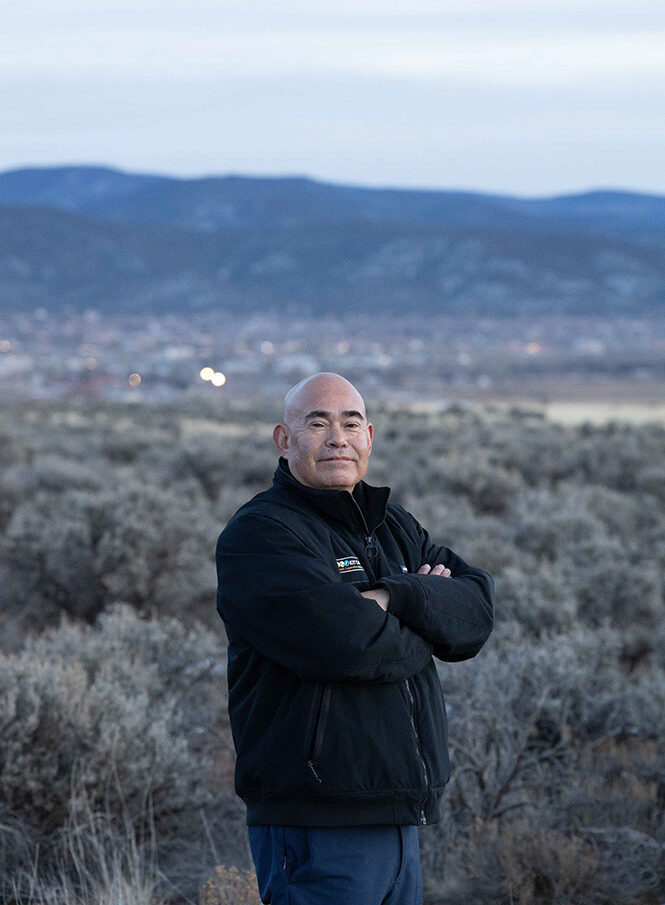 Luis Reyes Jr., CEO of Kit Carson Electric Cooperative. Credit: Juan Antonio Labreche / High Country News
Luis Reyes Jr., CEO of Kit Carson Electric Cooperative. Credit: Juan Antonio Labreche / High Country News
A product of the New Deal, Kit Carson was founded in 1944 to bring electricity to rural northern New Mexico. Today, there are 832 rural distribution co-ops nationwide.
In general, rural co-ops rely more on coal and have moved more slowly toward decarbonization than large investor-owned utilities. But that’s changing, with Kit Carson leading the charge. Co-op members worried about climate change are leveraging the distinctly democratic governing structures of rural distribution co-ops to encourage decarbonization. Robin Lunt, chief commercial officer at Guzman Energy, Kit Carson’s current energy supplier, called co-ops “a great bellwether” for shifting public opinion.
“They’re much closer to their communities,” she said, “and to their customers, because their customers are their owners.”
But democracy is messy, and change can take years. Lunt praised Reyes’ patience and persistence at Kit Carson, while Reyes credits the committed, vocal co-op members who pushed it to be “good stewards … of the land and water.” Still, the job is far from done, as the co-op continues its struggle to phase out fossil fuels entirely.
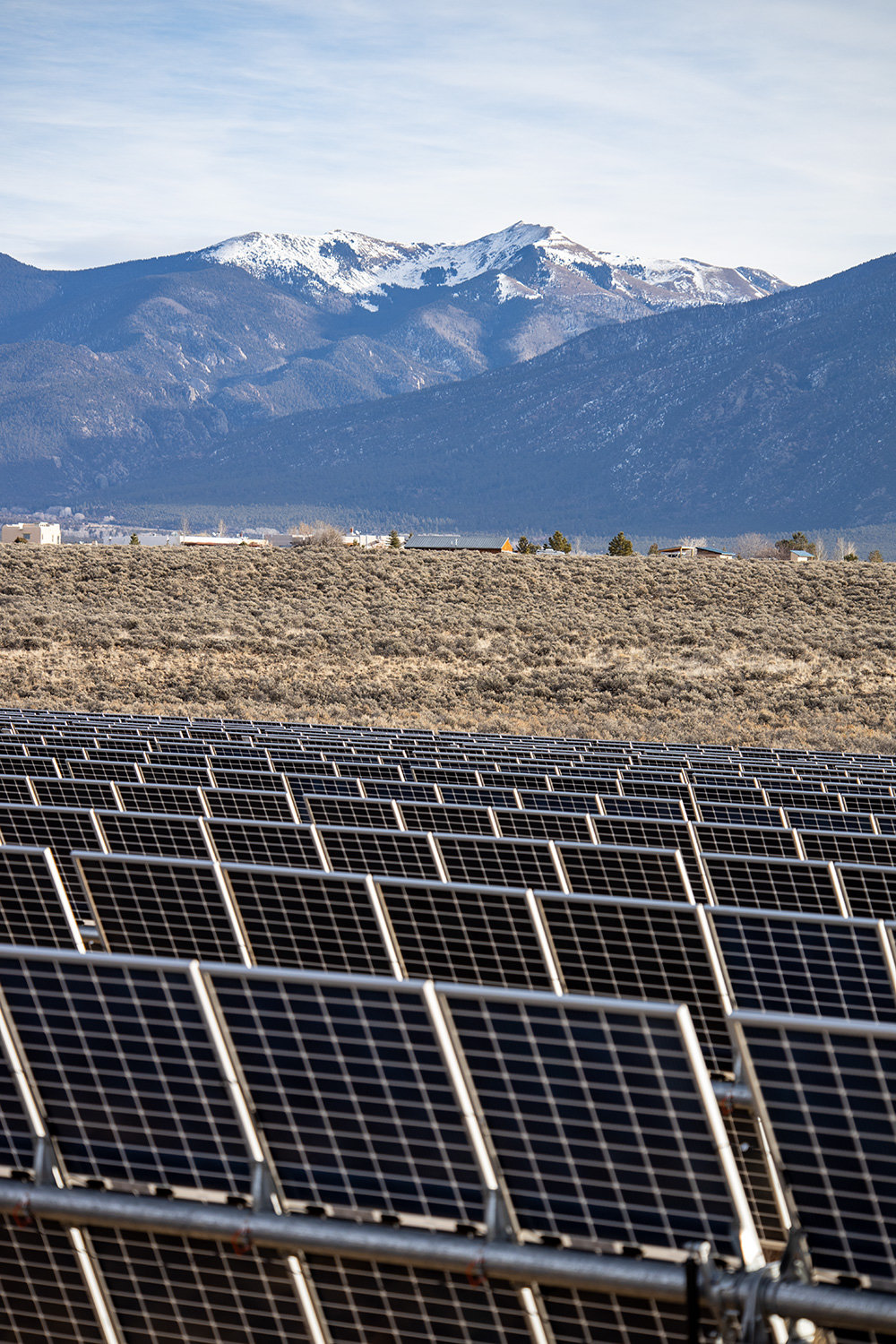 Kit Carson’s largest solar array, near Taos, New Mexico. Juan Antonio Labreche / High Country News
Kit Carson’s largest solar array, near Taos, New Mexico. Juan Antonio Labreche / High Country News
Reyes was raised in Taos, in a home powered by Kit Carson. He was with his mother one day when she paid her bill at the co-op office. A manager offered Reyes a job, which he took after graduating from New Mexico State in 1984 with a degree in electrical engineering. A decade later, he became CEO.
The early 2000s found the co-op trying to expand its offerings in rural areas and launch internet services. Tri-State was also trying to grow, and, in 2006, it announced plans to build a large coal plant in Kansas. It also wanted Kit Carson to extend its contract until 2050, adding another decade. It was around this time, Reyes said, that some members started asking “some pretty tough questions,” wondering why the co-op wasn’t investing more in renewables and whether it should extend its Tri-State contract.
Bobby Ortega, a retired community banker who was elected to the board in 2005, said that some board members, himself included, were hesitant to move away from fossil fuels. “When I got on this board, I was more leaning towards coal,” he said. “We were all raised on that kind of mentality (about) how our energy would be derived.”
Most of the board members had open minds, though, Ortega said, and Kit Carson refused to consent to an extension of the contract. The co-op wanted to end its relationship with Tri-State. But legally, the contract was still in force, and Kit Carson needed to find another energy provider before it could leave Tri-State.
Crushed by negative news?
Sign up for the Reasons to be Cheerful newsletter.
[contact-form-7]
In the following years, the co-op convened a committee of its members to discuss increasing solar energy usage. Tri-State, however, had set a five percent cap on locally generated electricity. In 2012, a group of Taoseños who shared an interest in renewable energy formed a nonprofit, Renewable Taos, and set a goal of 100 percent renewable energy for the area — a goal that was blocked by the Tri-State cap.
Renewable Taos reached out to Reyes to discuss the issue. As a co-op, Kit Carson needed buy-in across its service area — Taos and the Taos and Picuris pueblos, along with parts of Colfax and Rio Arriba counties — in order to make large-scale changes. But the co-op’s membership was hardly a monolith. “You had the liberals,” Reyes recalled, and the Renewable Taos members worried about climate change. But there had been an influx of “very wealthy but very conservative folks” in the Angel Fire ski area, and some of them were actively skeptical of renewables. Other Kit Carson members, notably those without much disposable income, feared that renewables would increase their monthly expenses.
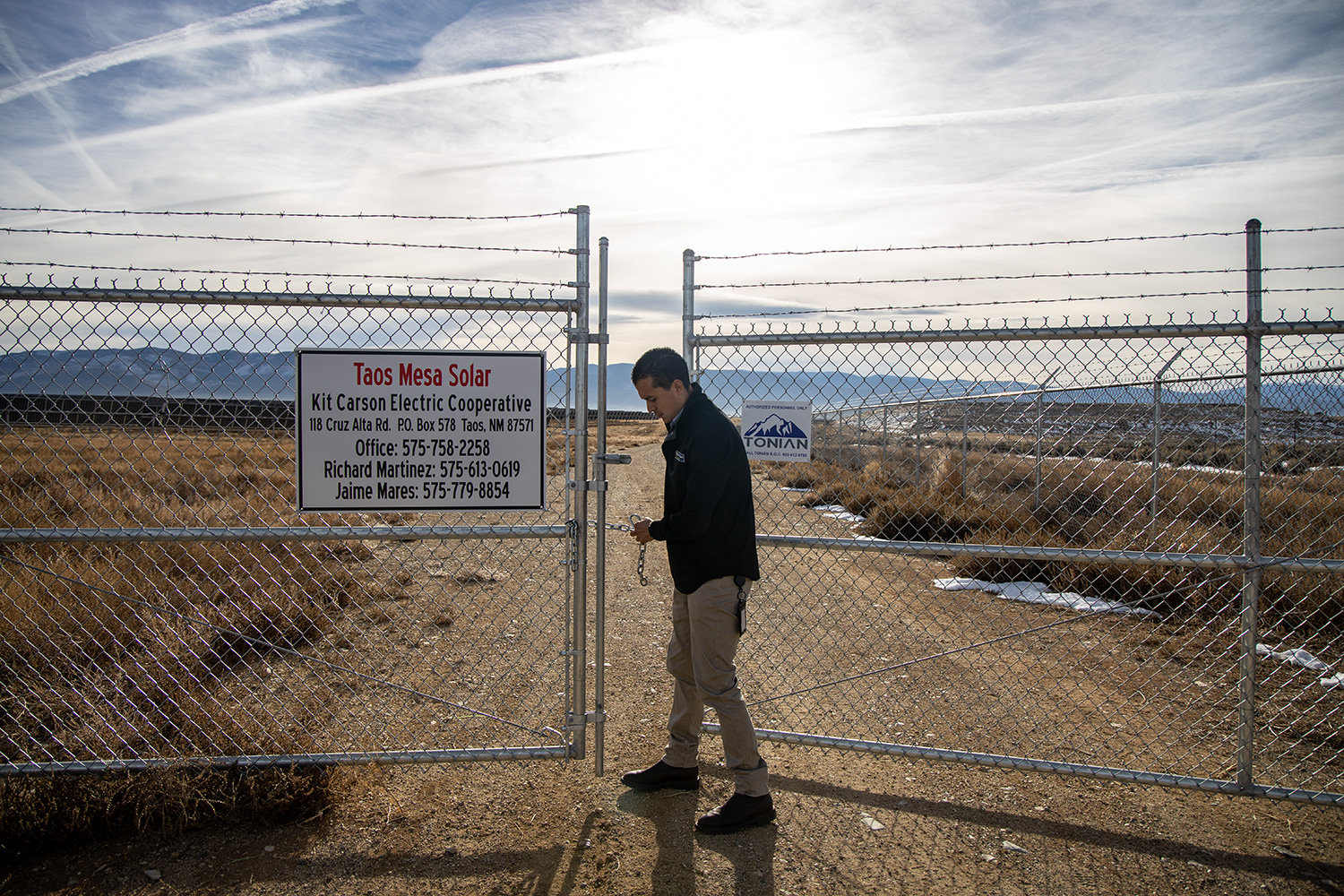 Kit Carson’s largest solar array, near Taos, New Mexico. Credit: Juan Antonio Labreche / High Country News
Kit Carson’s largest solar array, near Taos, New Mexico. Credit: Juan Antonio Labreche / High Country News
Renewable Taos began attending Kit Carson’s board meetings with a new goal in mind: moving the entire service area to 100 percent renewable energy if the Tri-State contract was broken. “We didn’t align at all,” Reyes recalled. The board thought Renewable Taos, some of whose members were well-to-do retired scientists, were “kind of telling us dummies what to do,” he said, with a chuckle.
But Reyes and the board found a way to address that tension. “At the end of our first meeting (with Renewable Taos), I suggested to the board, well, if these guys are really going to help us and be critical, let’s give ’em some homework,” he said. The board asked Renewable Taos to visit every municipality Kit Carson served to build support for a joint resolution declaring that all co-op members were committed to fighting climate change.
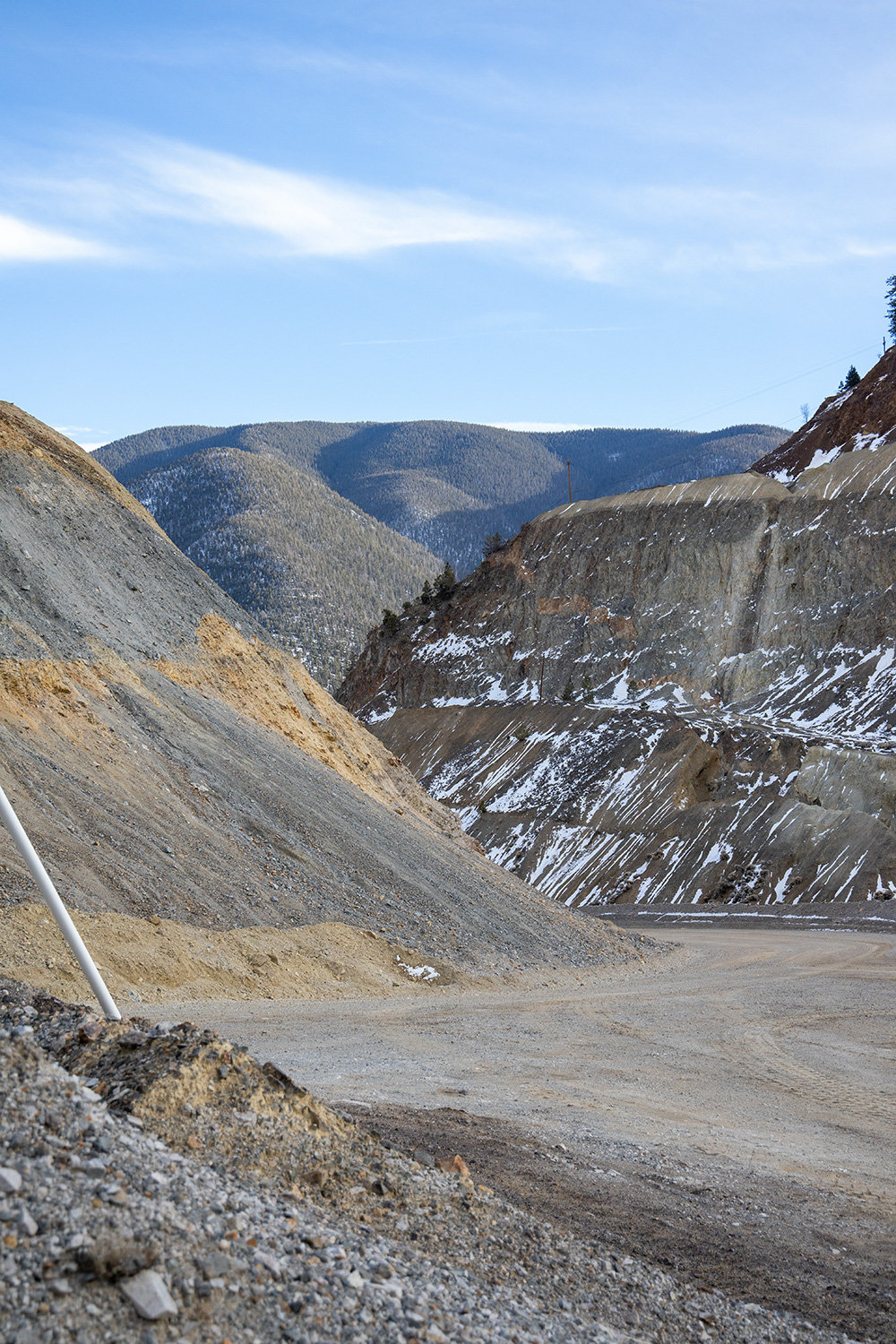 A shuttered molybdenum mine in Questa, New Mexico, would be the site of a new green hydrogen plant. Credit: Juan Antonio Labreche / High Country News
A shuttered molybdenum mine in Questa, New Mexico, would be the site of a new green hydrogen plant. Credit: Juan Antonio Labreche / High Country News
Jay Levine, one of the original Renewable Taos members, still wonders if that was an attempt to put them off politely. Even so, the group accepted Reyes’ challenge, visiting every municipality in Kit Carson’s service area and answering questions about renewables and energy costs. “We talked to a lot of folks, and I think everywhere we went, they signed on,” he said. The process was aided by the falling cost of solar energy, which began reaching price parity with coal in the mid-2010s.
By 2014, every community in Kit Carson’s service area had signed on to Renewable Taos’ clean energy resolution. Two years later, after the co-op board finally found an alternate energy supplier, it broke its Tri-State contract for $37 million. Thanks to increased control over its power sources, Kit Carson reached an important goal in 2022: Renewable energy now provides 100 percent of the year-round daytime electrical needs of its more than 30,000 members.
Now, other co-ops, notably Delta-Montrose in western Colorado, are following Kit Carson’s lead and leaving Tri-State in the name of clean energy.
Levine, the Renewable Taos member, said that Kit Carson’s long struggle paved the way for other co-ops to leave Tri-State. “That (trend) literally wouldn’t have happened,” he said, “because nobody else would have had the guts to do it.”
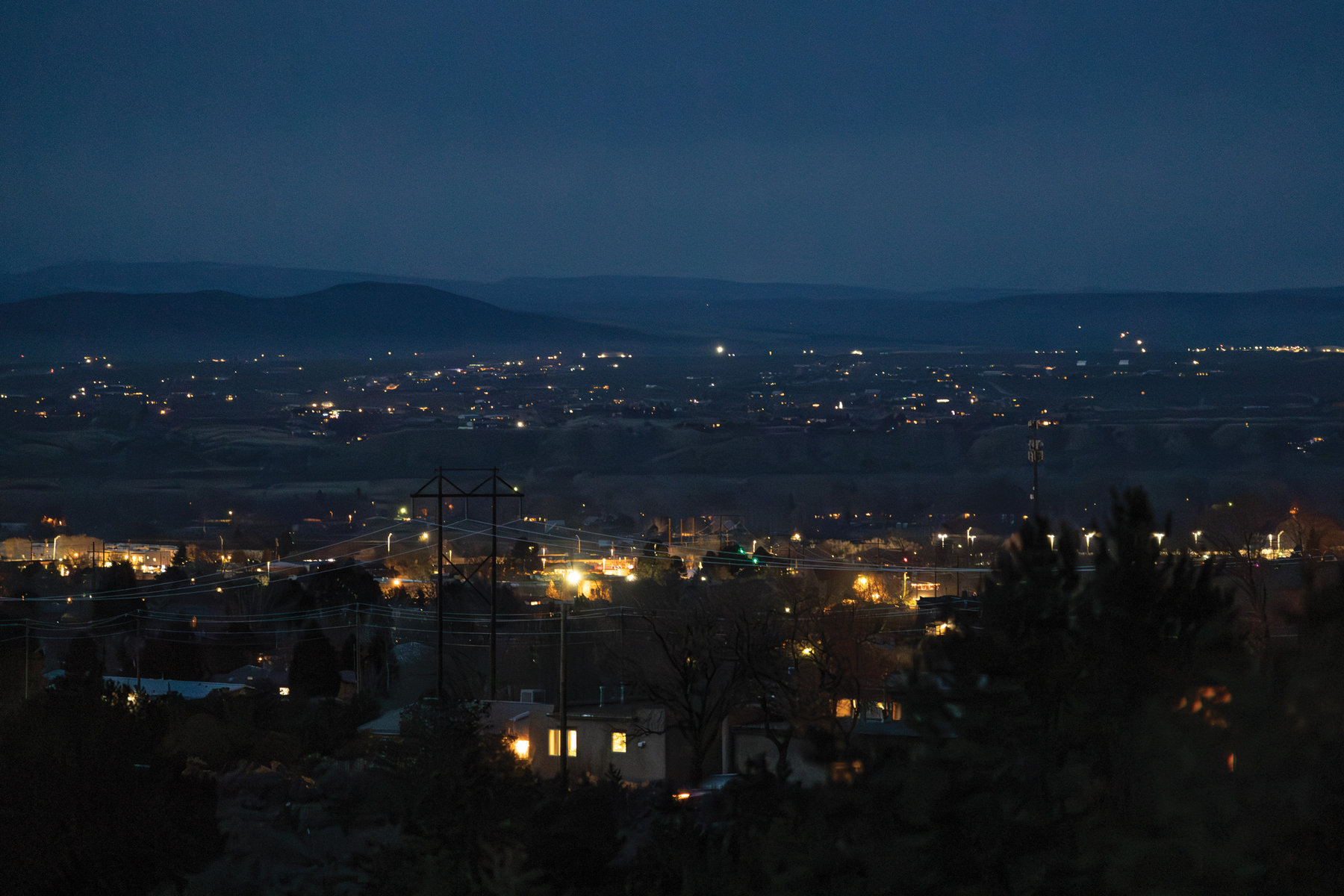 Energy users in the Taos area. Credit: Juan Antonio Labreche / High Country News
Energy users in the Taos area. Credit: Juan Antonio Labreche / High Country News
The co-op’s achievement — hitting the 100 percent daytime clean energy milestone — is clearly significant, but it also needs to meet a New Mexico mandate that rural co-ops transition entirely to carbon-neutral electricity by 2050. One potential pathway involves a green hydrogen plant that the co-op has explored with the National Renewable Energy Lab, other government partners and the small village of Questa.
Conventional hydrogen production, which uses fossil fuels, contributes to climate change, but so-called green hydrogen can be produced by splitting water atoms with an electrolyzer powered by renewable energy. Proponents think widespread green hydrogen could reduce US carbon dioxide emissions by 16 percent by mid-century. Despite all the investment and hype, however, few green hydrogen projects have broken ground. Still, Kit Carson has beaten the odds before; Reyes recalled that many people doubted that the co-op would ever reach its goal of meeting daytime energy needs with 100 percent renewables.


Become a sustaining member today!
Join the Reasons to be Cheerful community by supporting our nonprofit publication and giving what you can.
The Questa plant would be built at a shuttered molybdenum mine, which operated from the 1920s until 2014 and was a major source of both jobs and pollution. In 2005, a Chevron subsidiary, Chevron Mining, acquired Unocal, the mine’s parent company. Today, Chevron manages the remediation of what is now a Superfund site.
At a series of local meetings, water was the top concern for Kit Carson members. A variety of sources could be used to power the proposed plant, including water that Chevron is already pulling from the underground mine, treating, and sending to the Red River as part of its Superfund mitigation. Reyes is optimistic about the hydrogen project, describing it as the next phase of Kit Carson’s clean energy journey. But he noted that the future of the project, and of the co-op as a whole, ultimately lies in the hands of the co-op’s members. “They have been part of that equation the whole time,” he said.
The post The New Mexico Electricity Co-op Breaking Up With Fossil Fuels appeared first on Reasons to be Cheerful.
The Bank of England has been fuelling inflation by boosting the incomes of older, wealthier, Tory supporters
The FT has noted research by the Resolution Foundation this morning, reporting that:
The overall boost to UK savers’ incomes from higher interest rates outstripped the impact of increased mortgage payments on households, according to new research from the Resolution Foundation think-tank.
They added this detail:
Real income from savings rose by £34bn over the period — more than offsetting the £18bn rise in debt interest costs. The boon accounted for three-fifths of all household income growth since the last quarter of 2021, the research found.
Three observations follow. The first is that this adds to my belief that interest rate rises have fuelled inflation by increasing the disposable income of the moderately wealthy, likely more elderly population, who have an inclination to spend.
Second, it makes clear just how little of the impact of interest rate rises has already arisen - and how much more is to come, supporting my suggestion that recession is likely as a result of them.
Third, there is a political dimension to this. We know that the wealthy tend to be older. So too are Tory voters. As Statista has reported, voting intentions in a general election in the United Kingdom in September 2023, by age group, were as follows:
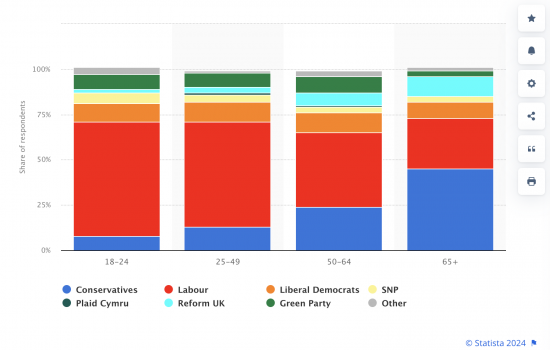
Interest rate rises are very clearly to the benefit of the only age cohort displaying core support for the Tory party. Why would they want to change that?
Which leads to another question, which is why is Labour not saying it wants to see rates fall? I wish I knew.
In fact, there is so much about that chart that begs so many questions of Labour that one wonders where they are on the political planet. Or is it that they simply think that they have the young, like the left, in the bag, and so are spending all their time playing to the old? If so, why? Taking their existing support for granted when there may be ten months to go to an election really does not seem like a very good idea when the party seems determined to say nothing about what it will do for anyone. This election is not over yet.
With Boomers Retiring, Worker Co-ops Are on the Rise
Three great stories we found on the internet this week.
Teamwork
In the years ahead, more and more baby boomers will retire, some of them without plan for who will run their businesses. One response to this “silver tsunami”: creating worker-owned cooperatives. In worker co-ops, the workers run the business and keep the profits. This has been shown to result in better pay than traditional businesses — and more productivity, too.
 Credit: Brian O’Doherty
Credit: Brian O’Doherty
Case in point: When the owner of Baltimore’s Common Ground Cafe retired and closed the shop last summer, its employees banded together and quickly began to organize. In the first six weeks after the cafe reopened as a worker co-op, Common Ground was able to raise wages by up to 25 percent.
Reopening as a co-op “was the best feeling in the world,” barista Sierra Allen told Yes! Magazine, “because we get to see our customers, we get to spend time with one another, and when we see issues, we can fix them the way we see fit.”
Under the sun
Solar power has become the cheapest form of energy in the world, making it an appealing option for Native American tribes who lack reliable access to electricity. That — along with the impacts of fossil fuels — is why Cody Two Bears, member of the Sioux tribe in North Dakota, started building solar farms.
Two Bears is the founder of Indigenized Energy, which installs free solar farms for tribal nations. A 1,100-panel solar farm that Indigenized Energy built in Cannon Ball, on the Standing Rock reservation, produces enough energy to power 60 homes and saves the tribe up to $10,000 per year.
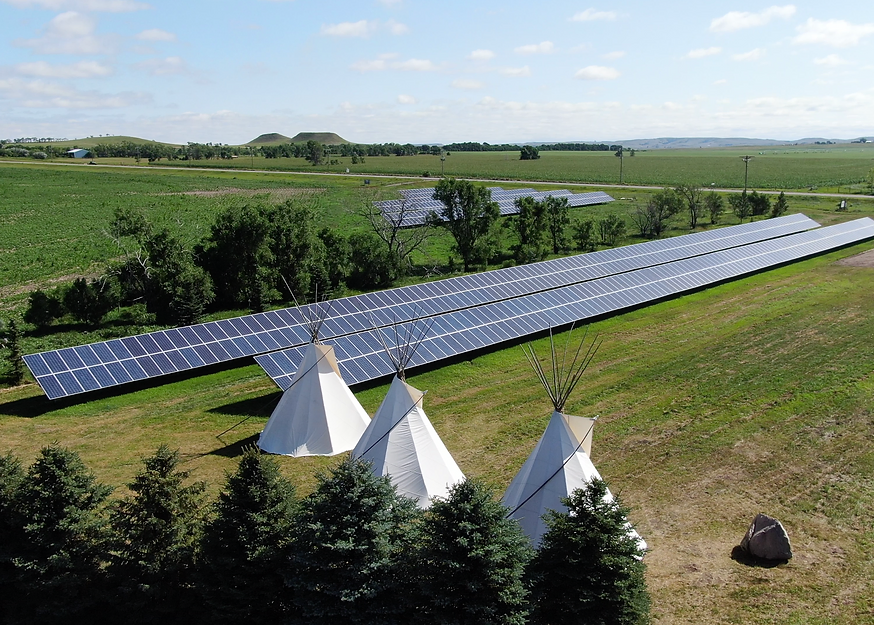 Courtesy of Indigenized Energy
Courtesy of Indigenized Energy
When reservations were created, the government intentionally placed many of them on land that wasn’t good for farming. But now, because the tribes have been such good stewards of the environment, much of that land is ideal for renewables. “Some of the lands that were the worst lands 160 years ago are now some of the most pristine because our tribal nations have protected and preserved them,” said Two Bears.
Free reads
A new major book award has launched in the US with a unique jury: 300 incarcerated people. Created by Freedom Reads, the National Book Foundation and the Center for Justice Innovation, the competition is a way for those serving sentences “to meaningfully participate in our shared national cultural conversation,” Freedom Reads CEO Reginald Dwayne Betts said in a press release.
Crushed by negative news?
Sign up for the Reasons to be Cheerful newsletter.
[contact-form-7]
The finalists are Tess Gunty, Jamil Jan Kochai, Roger Reeves and Imani Perry. Before the winner is announced in June 2024, incarcerated people will also be able to participate in live discussions and literary readings.
John J. Lennon, a writer who is serving a life sentence, was involved in planning the award and is serving as a juror. “The award just tells us, hey, we can add meaning, it shows us that our word can count too,” Lennon said.
The post With Boomers Retiring, Worker Co-ops Are on the Rise appeared first on Reasons to be Cheerful.
I beseech you to cut inheritance tax, Sir
Me, in East Anglia Bylines this morning:
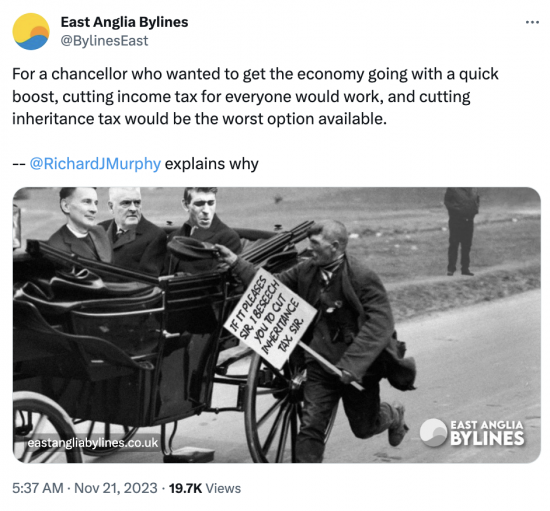
I love the image by Cold War Steve, used by East Anglia Bylines with his permission.